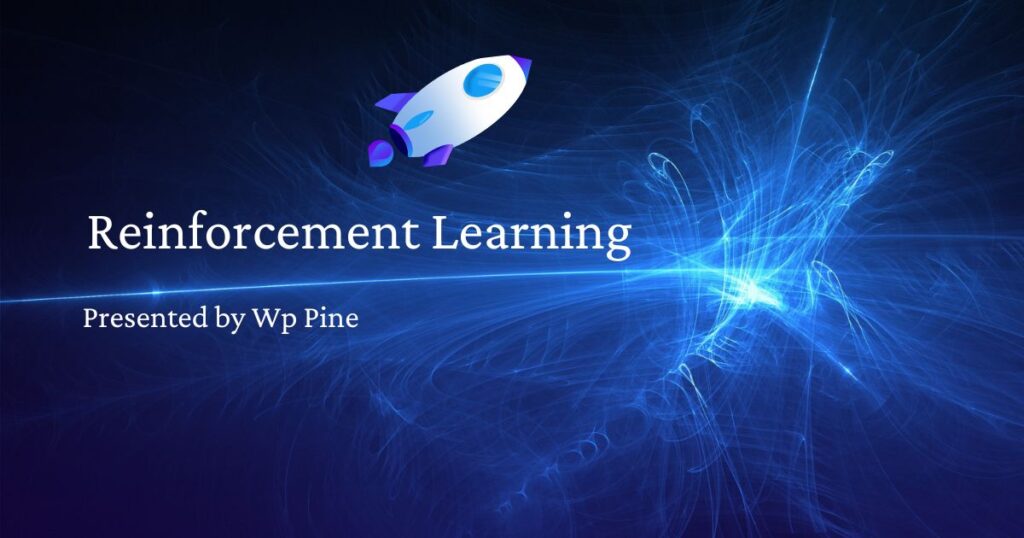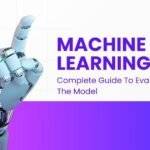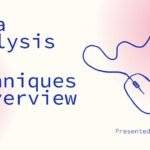RL is a type of machine learning that uses an agent to decide on what actions it will take in an environment to gain a maximum amount of cumulative reward. In contrast to supervised and unsupervised learning, which depend on the labeled data, reinforcement learning concentrates on learning through interaction with the environment. The kind of feedback that the agent gets comprises rewards or penalties depending on the action that the agent has taken and by the application of this feedback the agent refines its decision-making policy.
History and Development
The roots of reinforcement learning can be traced back to the 1950s and 60s with early work by researchers such as Richard Bellman and Donald Michie. The development of RL has been influenced by fields like behavioral psychology, where concepts of reward and punishment are fundamental. Over the years, RL has evolved significantly, especially with the advent of deep reinforcement learning, which combines RL with deep learning techniques to handle more complex environments and tasks.
Key Concepts in Reinforcement Learning
Agents, Environments, and Rewards
- Agents: In reinforcement learning, an agent is a decision-maker that interacts with the environment. The agent’s objective is to learn the best actions to take in different states to maximize cumulative rewards.
- Environments: The environment represents everything the agent interacts with. It provides the states, responds to the agent’s actions, and delivers rewards. The environment is typically modeled as a stochastic process.
- Rewards: Rewards are feedback signals that the agent receives after taking action. They indicate the immediate benefit or cost of an action and guide the agent toward desirable behavior. The goal of the agent is to maximize the total reward it receives over time.
The Markov Decision Process
The Markov Decision Process (MDP) is a mathematical framework used to describe reinforcement learning problems. It consists of the following components:
- States (S): The set of all possible situations the agent can encounter.
- Actions (A): The set of all possible actions the agent can take.
- Rewards (R): The set of all possible rewards the agent can receive.
- Transition Probabilities (P): The probabilities of moving from one state to another after taking a particular action.
MDPs assume the Markov property, which means the future state depends only on the current state and action, not on the past states or actions.
Policies and Value Functions
- Policies (π): A policy defines the agent’s behavior by mapping states to actions. Policies can be deterministic, where a specific action is chosen for each state, or stochastic, where actions are chosen according to a probability distribution.
- Value Functions: Value functions estimate the expected return (cumulative reward) from a given state or state-action pair. There are two main types:
- State-Value Function (V): Estimates the value of being in a particular state.
- Action-Value Function (Q): Estimates the value of taking a particular action in a given state.
Types of Reinforcement Learning
Model-Free vs Model-Based Learning
- Model-Free Learning: In model-free learning, the agent learns directly from experience without building a model of the environment. Examples include Q-Learning and SARSA.
- Model-Based Learning: In model-based learning, the agent builds a model of the environment’s dynamics and uses it for planning and decision-making. This approach can be more sample-efficient but requires accurate modeling of the environment.
Value-Based Methods
- Q-Learning: Q-Learning is a value-based method that aims to learn the optimal action-value function. It updates Q-values based on the Bellman equation, iteratively improving estimates of the value of actions in each state.
- SARSA: SARSA (State-Action-Reward-State-Action) is another value-based method that updates Q-values based on the action taken by the agent, leading to on-policy learning.
Policy-Based Methods
- Policy Gradient: Policy gradient methods optimize the policy directly by computing gradients of expected rewards. These methods are particularly useful in continuous action spaces where value-based methods struggle.
Core Algorithms in Reinforcement Learning
Q-Learning
Q-learning is a foundational algorithm in reinforcement learning. It updates the Q-value for a state-action pair based on the reward received and the maximum future Q-value:
[ Q(s, a) left arrow Q(s, a) + alpha [r + gamma max_{a’} Q(s’, a’) – Q(s, a)] ]
where ( alpha ) is the learning rate, ( gamma ) is the discount factor, and ( r ) is the reward received. This process iterates until the Q-values converge to the optimal action-value function.
SARSA
SARSA stands for State-Action-Reward-State-Action and updates the Q-value based on the actual action taken by the agent:
[ Q(s, a) left arrow Q(s, a) + alpha [r + gamma Q(s’, a’) – Q(s, a)] ]
This approach ensures that the learned policy is the one the agent follows, leading to on-policy learning.
Deep Q-Networks (DQN)
Deep Q-Networks (DQN) extend Q-Learning by using neural networks to approximate the Q-value function. This allows DQN to handle high-dimensional state spaces. Notably, DQN was used by DeepMind to achieve human-level performance in Atari games. The key innovations include experience replay and target networks to stabilize training.
Actor-Critic Methods
Actor-critic methods combine value-based and policy-based approaches. The actor updates the policy directly, while the critic evaluates the policy by estimating value functions. Popular variants include Asynchronous Advantage Actor-Critic (A3C) and Deep Deterministic Policy Gradient (DDPG), which are effective for continuous action spaces.
Applications of Reinforcement Learning

Robotics
Reinforcement learning is widely used in robotics for tasks like manipulation, navigation, and control. RL enables robots to learn from interactions with their environment and adapt to new tasks. For example, RL has been used to train robotic arms to perform precise movements and grasp objects accurately.
Game Playing
RL has achieved significant success in game playing. Notable examples include AlphaGo, which defeated world champions in the game of Go using RL techniques, and OpenAI Five, which competed at a high level in Dota 2. These successes demonstrate the potential of RL in solving complex decision-making problems.
Autonomous Vehicles
Autonomous vehicles leverage reinforcement learning to make driving decisions, such as lane keeping, obstacle avoidance, and route planning. RL algorithms enable these vehicles to learn from simulated and real-world driving experiences, improving safety and efficiency.
Healthcare and Medicine
In healthcare, RL is used for personalized treatment planning, drug discovery, and robotic surgery. For instance, RL algorithms can optimize chemotherapy dosing schedules for cancer patients, improving treatment outcomes. Moreover, RL is being explored for its potential to assist in medical diagnostics and decision-making.
Challenges and Future Directions
Exploration vs Exploitation Dilemma
One of the key challenges in reinforcement learning is the exploration vs. exploitation trade-off. The agent must balance exploring new actions to discover potentially better rewards with exploiting known actions that yield high rewards. Strategies like epsilon-greedy, softmax, and upper confidence bound (UCB) are used to address this dilemma.
Scalability and Efficiency
Scaling RL algorithms to large and complex environments remains a significant challenge. Training RL models can be computationally expensive and time-consuming. Recent advancements in distributed RL and more efficient algorithms are helping to address these scalability issues.
Safety and Ethical Considerations
Deploying RL systems in real-world applications raises safety and ethical concerns. Ensuring that RL agents behave safely and ethically is crucial, especially in safety-critical domains like healthcare and autonomous driving. Techniques like safe RL and robust RL are being developed to mitigate these risks.
Emerging Trends and Innovations
Emerging trends in reinforcement learning include multi-agent RL, where multiple agents learn to cooperate or compete in shared environments, and meta-learning, which aims to make RL agents more adaptable to new tasks. The integration of RL with other AI fields, such as natural language processing and computer vision, is also a promising area of research.
Practical Implementation
Popular Libraries and Frameworks
Several libraries and frameworks make it easier to implement reinforcement learning algorithms:
- TensorFlow: A popular deep learning framework that supports RL through libraries like TF-Agents.
- PyTorch: Another widely used deep learning framework with RL libraries such as Stable Baselines and RLlib.
- OpenAI Gym: A toolkit for developing and comparing RL algorithms, providing a wide range of environments for testing.
Setting Up a Reinforcement Learning Project
Setting up an RL project involves several steps:
- Define the Problem: Clearly articulate the problem you want to solve with RL.
- Choose an Environment: Select an appropriate environment for your RL agent to interact with.
- Select an Algorithm: Choose an RL algorithm that suits your problem and environment.
- Implement the Algorithm: Use libraries and frameworks to implement the chosen algorithm.
- Train the Agent: Train your RL agent by running simulations and updating the policy based on rewards.
- Evaluate and Tune: Evaluate the performance of your agent and tune hyperparameters for optimal results.
Example Code and Walkthrough
Here is a simple example of implementing Q-Learning using Python and OpenAI Gym:
import gym
import numpy as np
env = gym.make('FrozenLake-v1', is_slippery=False)
Q = np.zeros((env.observation_space.n, env.action_space.n))
alpha =
0.1
gamma = 0.99
epsilon = 0.1
def choose_action(state):
if np.random.uniform(0, 1) < epsilon:
return env.action_space.sample()
else:
return np.argmax(Q[state, :])
for episode in range(1000):
state = env.reset()
done = False
while not done:
action = choose_action(state)
next_state, reward, done, _ = env.step(action)
Q[state, action] = Q[state, action] + alpha * (reward + gamma * np.max(Q[next_state, :]) - Q[state, action])
state = next_state
print("Q-Table:", Q)This example trains an agent to navigate the FrozenLake environment using the Q-Learning algorithm.
Conclusion
Recap of Key Points
Reinforcement learning is a powerful and versatile machine learning paradigm that enables agents to learn optimal behaviors through interactions with their environment. Key concepts such as agents, environments, rewards, and value functions form the foundation of RL. Different types of RL methods, including model-free, model-based, value-based, and policy-based approaches, offer various strategies for solving RL problems. Core algorithms like Q-Learning, SARSA, DQN, and Actor-Critic methods have demonstrated significant success in diverse applications.
Future Outlook for Reinforcement Learning
The future of reinforcement learning is promising, with ongoing research addressing challenges related to exploration, scalability, safety, and ethics. Emerging trends like multi-agent RL, meta-learning, and the integration of RL with other AI fields are set to drive further advancements. As RL continues to evolve, its potential impact on fields such as robotics, game playing, autonomous vehicles, and healthcare will undoubtedly grow.
Further Reading
- Learn the of Power – Reinforcement Learning
- Complete Guide to- Evaluate the Machine Learning Model
- A deep dive into RNN by Wppine
- A deep dive into CNN by Wppine




Pingback: Building Models With TensorFlow - A Comprehensive Guide
Pingback: Machine Learning and Meta-Learning Comparison - WP Pine